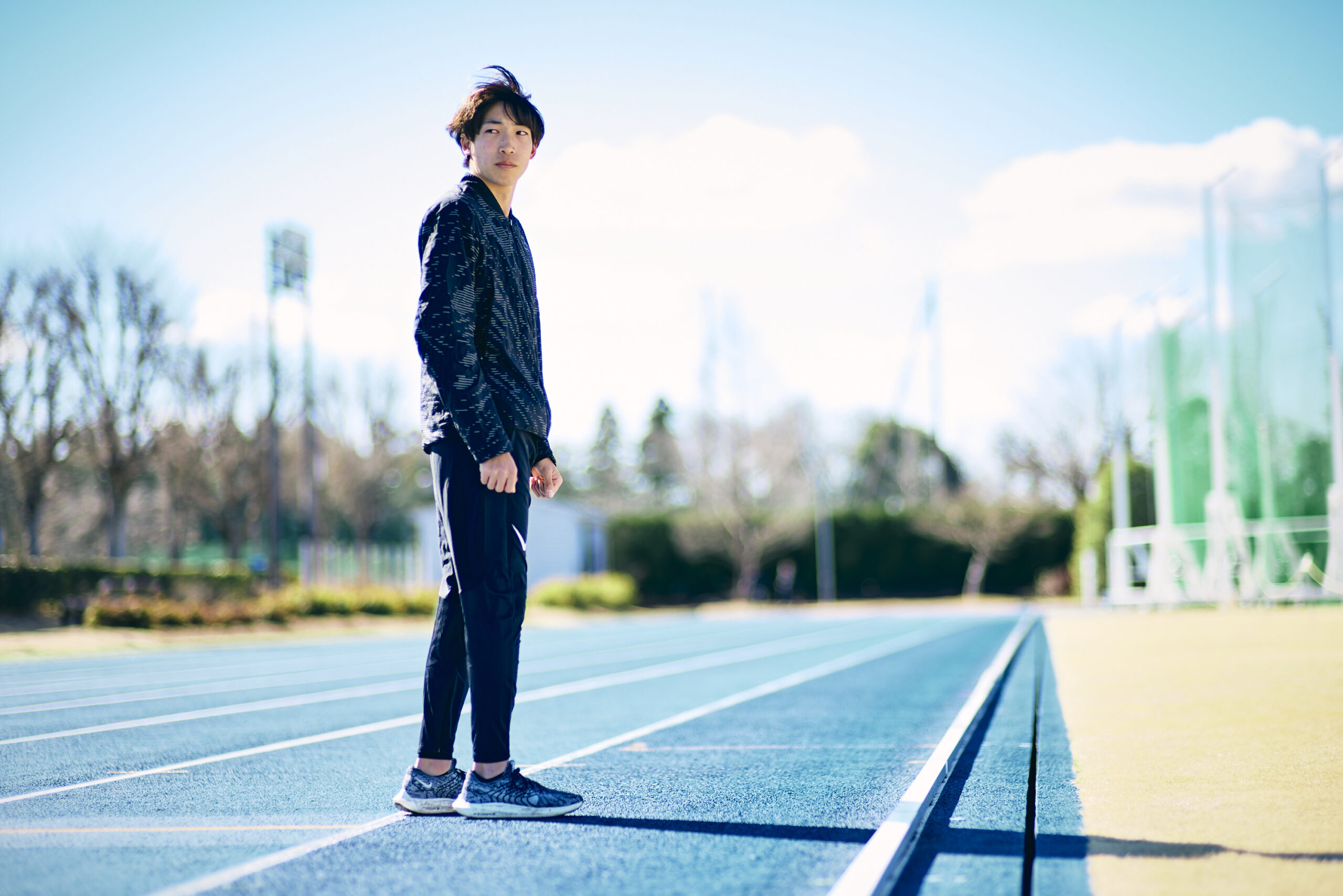
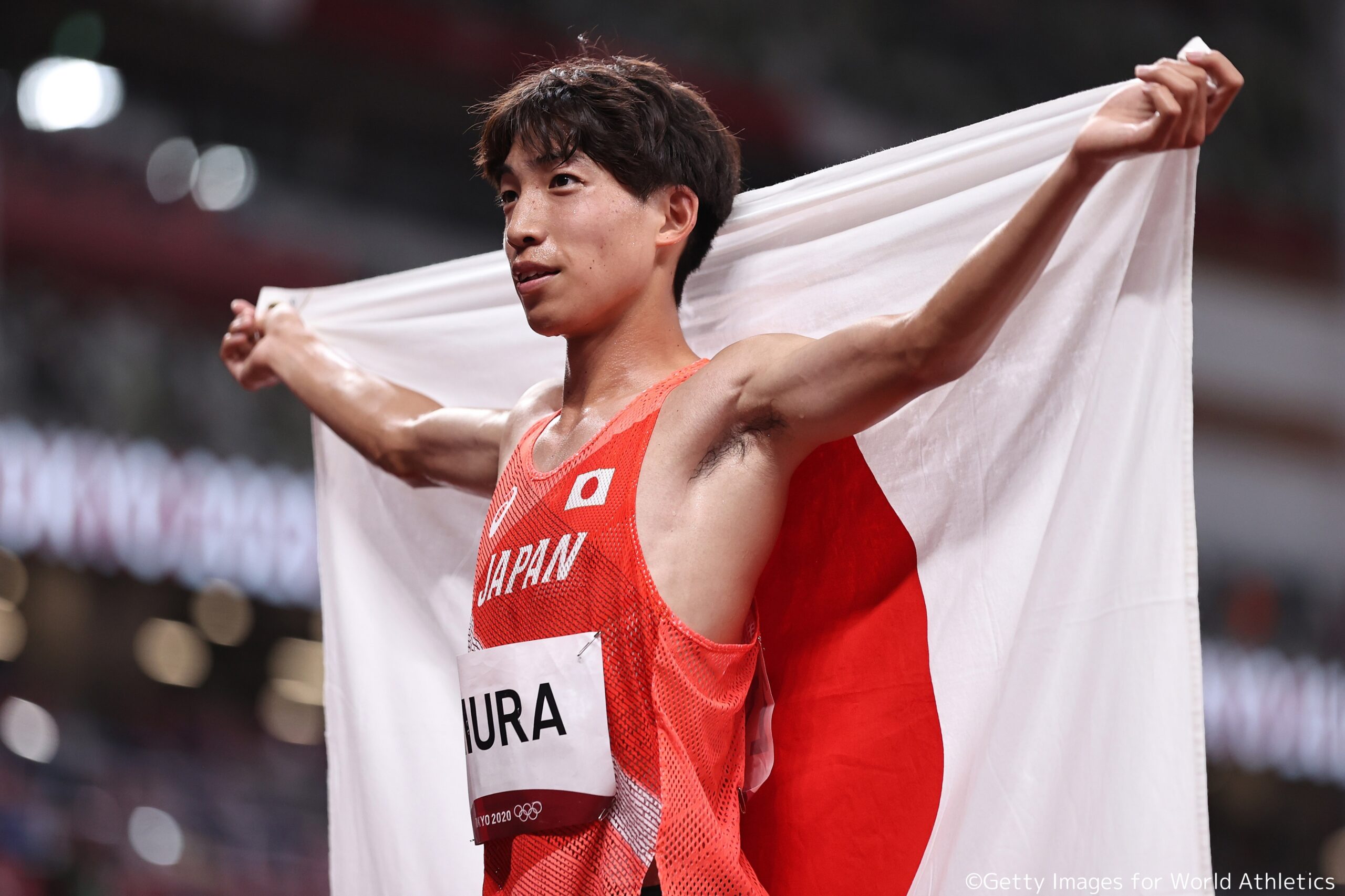
Ryuji Miura
Born in Shimane Prefecture in 2002. Men’s 3000m steeplechase Japanese record holder (8:09.91).
After graduating from Rakunan High School and Juntendo University, he will join the SUBARU Track & Field Club in April 2024.
In 2021, at the age of 19, he broke the Japanese record for the men’s 3000m steeplechase for the first time in 18 years. Subsequently, he became the first Japanese athlete to place in the Tokyo 2020 Olympic Games and the Budapest 2023 World Championships. He has also competed and placed in the finals of the annual Diamond League multiple times.
In the JAAF Athletics Awards 2023, he was selected as the “Outstanding Athlete Award” among many athletes. He was also selected as the first male athlete (3rd overall) in the “Best Performance Award” in the Top Athletes category of the JAAF Fan Vote 2023, and is a promising athlete in both name and reality.
Decided to “Jump in” if He could Compete at the National Level
–How did you get started in track and field?
In addition to being recommended by my parents, there was a club team nearby, so I joined it. 3000m steeplechase is an event I started in high school, and I didn’t work on it during my junior year, but because I was doing hurdles and long distance at that time, the club team coach thought I might be suited for it. He saw the potential in me. So I started in high school.
–How did you feel when you were first recommended?
I was like, “What’s that all about?” (laughs) But I was not reluctant to switch. I was very weak at the time. I thought that if I could compete with national-level athletes, I would jump into that discipline.
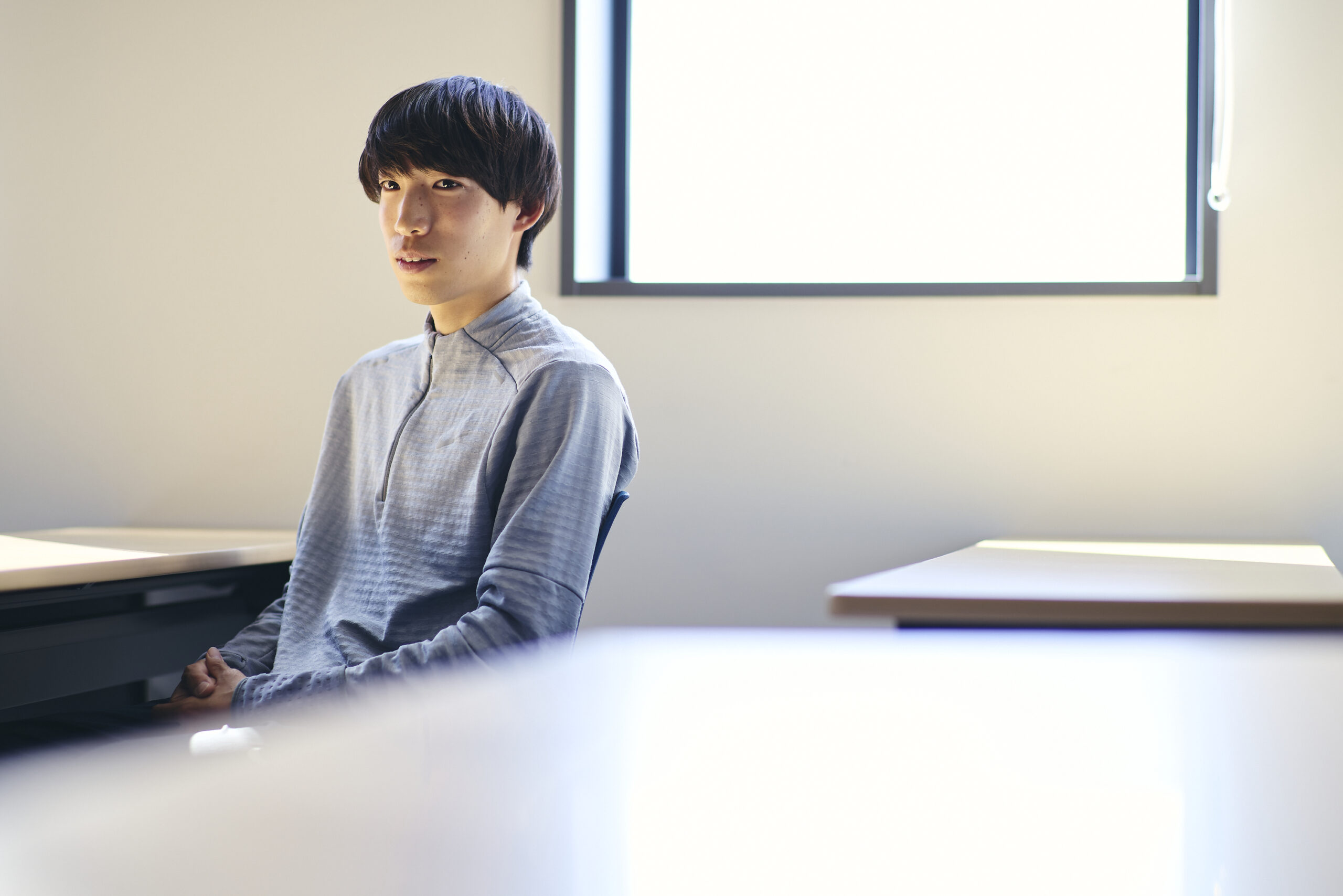
Before starting this event, he recalls, “I was very weak.”
–What characteristics of yourself do you feel make you suitable for the 3000m steeplechase?
I had other strengths that I developed in my junior years besides long distance, such as jumping ability, so when I considered them all together, I think I was a good fit for the 3000m steeplechase. There were a lot of highly related movements, so I think my coach saw those aspects and recommended me that it had potential.
–Is there any race or event that made you feel you could aim for the world in 3000m steeplechase?
The one event that I felt changed me was the Hokulen Distance Challenge in 2020, when I was a freshman in college. I ran 8:19:37 in that event and was able to shorten my time, which I thought would be a bit of a struggle to overcome. It brought me a lot closer to qualifying for the Tokyo 2020 Olympics and made me think that breaking the Japanese record might be within my reach.
Factors that Led to the Dramatic Increase in Time
–You broke the Japanese record for the first time in 18 years with 8:17.46 in the test event for the Tokyo 2020 Olympic Games in 2021. What were the factors that contributed to your record improvement during this period?
When I entered university in 2020, the new coronavirus was just beginning to spread, and although I came to the university once, I immediately went home to practice on my own. The menu was to focus on basic practice, but also to practice with a high workload that I had never experienced before, including in terms of quality, so I think the first good thing was that it meshed well. I also changed my shoes. The spikes I used in high school were ordinary ones, but at Hokuriku Distance I wore thick-soled spikes with air in them, and my record improved. I think these changes in shoes and practice environment were major factors.
–What did you feel was the difference in the spikes?
The 3000m steeplechase is a high-impact event, so I felt that the air in the soles of the shoes helped to cushion the impact of the ground contact, which in turn was converted into propulsive force. It was a feeling I had never had before, and I think the fact that I was able to run with a fresh feeling after trying it out helped me improve my record. I felt that shoes play a bigger role than I had imagined, and that the effect of shoes becomes more apparent in the latter half of the race, and that if I could make good use of such performance when I was getting tired, I could improve my record.
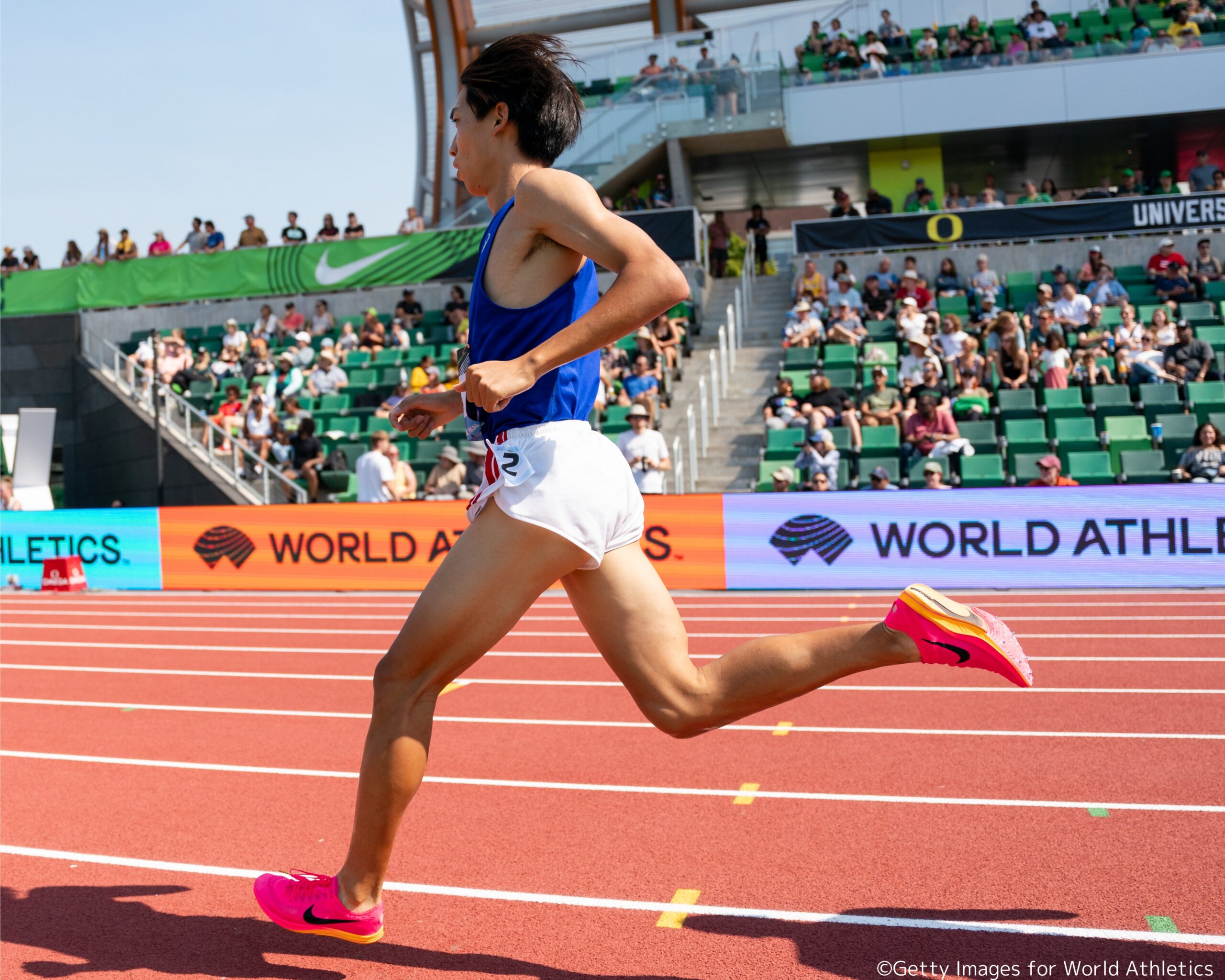
–The 3000m steeplechase is a grueling event with a total of 28 obstacles and 7 jumps over the water jump.
If you are a super high school athlete, I think you can go as far as running in the 8:30 range. However, that is the level of ability that an athlete originally possesses, and beyond that, it is difficult to consistently set records unless the athlete has a high overall level of technical skill, 1500m speed, and endurance. Furthermore, if you are competing in international competitions, you need to be able to reproduce the same quality. I find it fascinating that the more you want to perform, the more you need to be highly capable in various disciplines.
The Water Jump is Better to Go in with a Clean Slate
–What kind of points of interest do you think make the competition more interesting to watch?
I think the water jump is one point. It is an event in which the race changes rapidly, so you don’t know where the race is going until the last 100 meters. I think it is an event where both spectators and competitors can experience a sense of tension. It is a contact sport, and there is a possibility that a competitor may make a mistake. From the perspective of those who are competing, they cannot let their guard down from start to finish. It is not uncommon for a single contact to drop you from first place to far behind in the standings. From the viewer’s point of view, I think that is the charm of the sport, and from the person doing it, it is the real thrill.
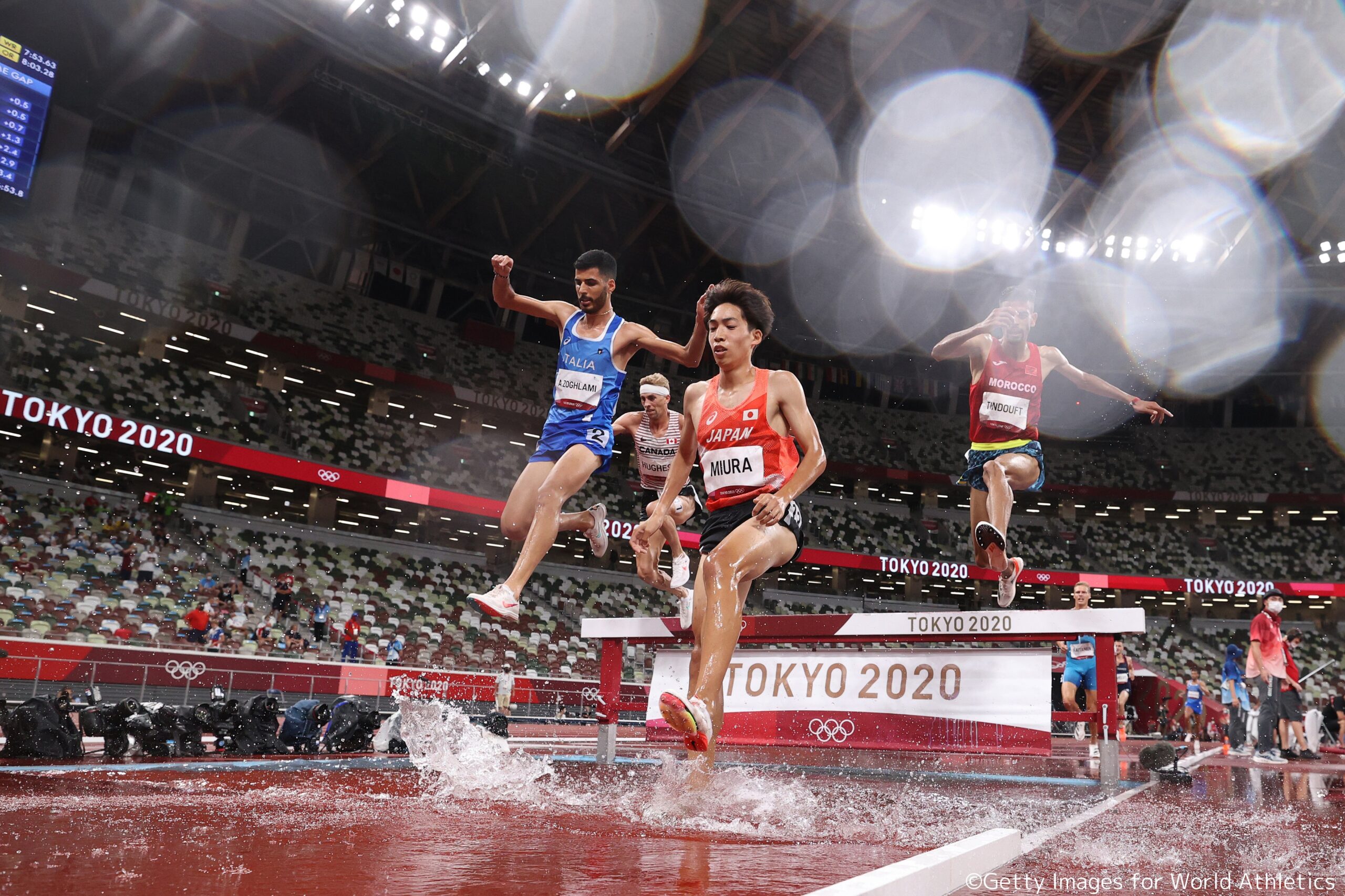
–How do you deal with the water jump?
I think that good judgment is required, so I try not to get emotional. For example, just because another racer breaks away with 300m to go, I don’t follow him. There are obstacles until 50m to go, so if I go too hard, I might not have enough energy left and I might fall over. The last 150m is the most difficult part of the race, the water jump, so if I don’t perform as usual, I will end up losing my footing. I think I need to stay calm there.
–How do you practice?
As the season progresses, I practice more to get a sense of distance using obstacles and to check my body’s sharpness, such as starting to move from ground contact. However, I don’t particularly practice on the water jump. There are various theories, but I think it is better to do the water jump test on the spot. The risks are higher in the water jump, and I believe that the obstacles can compensate for the jumping movements alone.
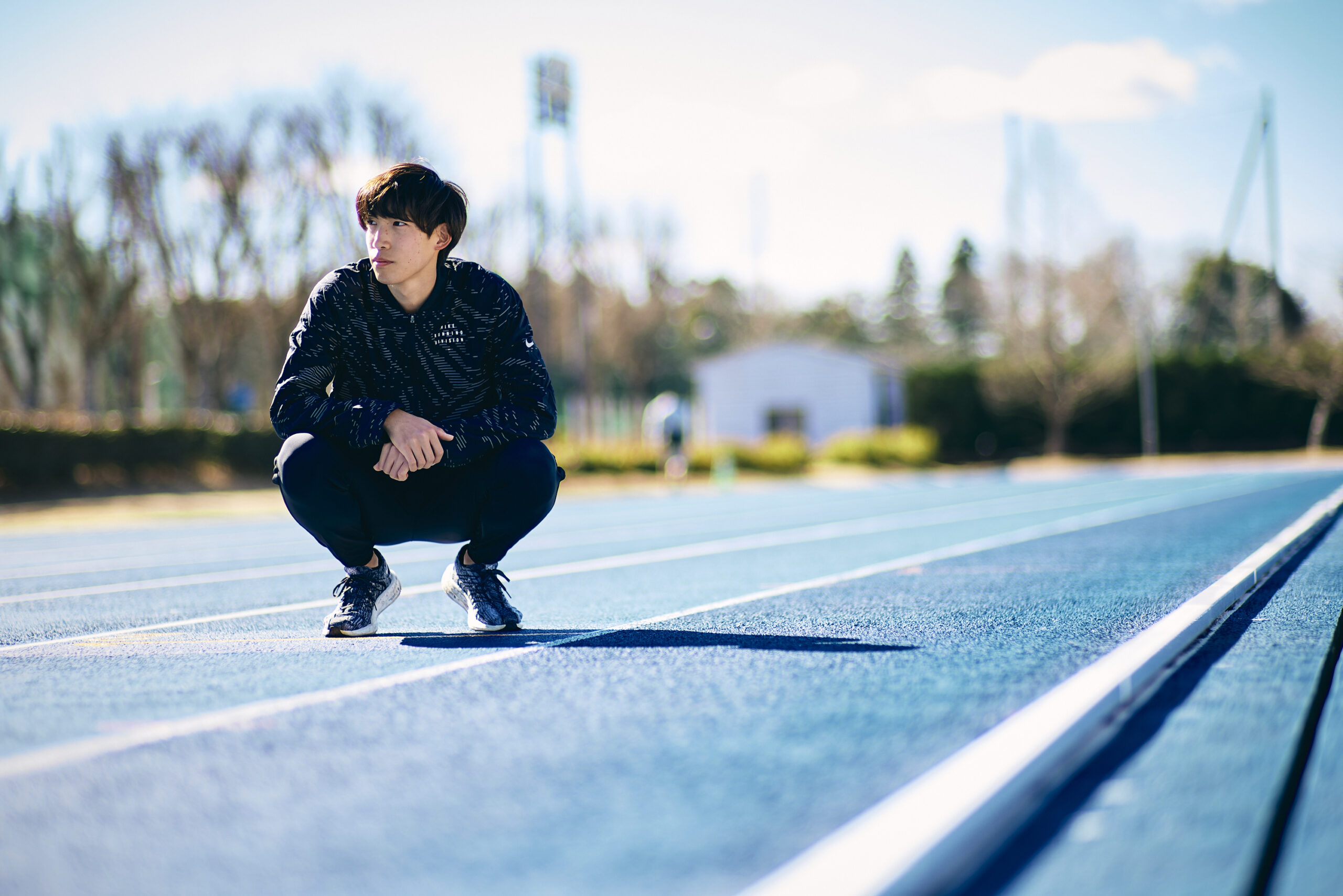
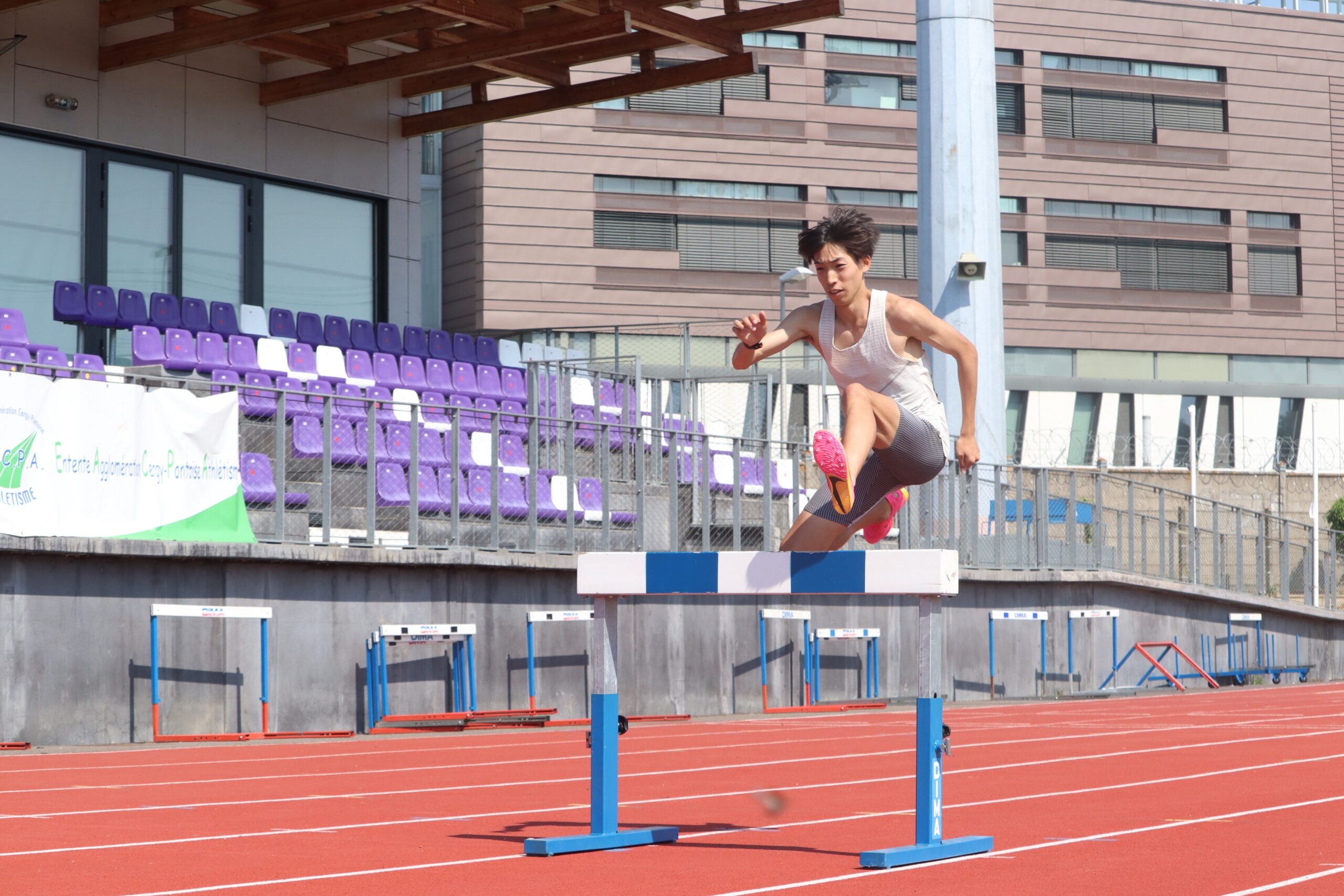
*Courtesy of the individual
By Competing in International Competitions, “My Goals Become Clearer”
–You have said in the past that you are a person who was changed by meeting the 3000m steeplechase. How do you feel you have changed as an athlete and as a person?
I was not a nationally competitive athlete at my junior high school level, but by competing in the 3000m steeplechase, I was able to compete on a stage where I had never been able to compete before. If I had not encountered this event, I would have been a nothing athlete. From a human perspective, being able to compete in international competitions overseas also made me realize that the values I thought were common sense in Japan were actually not that important. I was able to gain a variety of information and have a different perspective, and I make new discoveries every time.
–What are some of the specific values and discoveries that you have gained from competing in international competitions?
My goals became clearer. I have a clear axis for myself, what I want to do, and where I want to go. For example, in domestic races, there is a strong tendency to focus on time, but in international races, rankings, wins, and losses are all important. The best performance tends to be measured in terms of time. However, when results are required, greed, cunning, and hunger are important. Overseas athletes often expose these qualities. That is one of the reasons why I have recently become more focused on the competition.
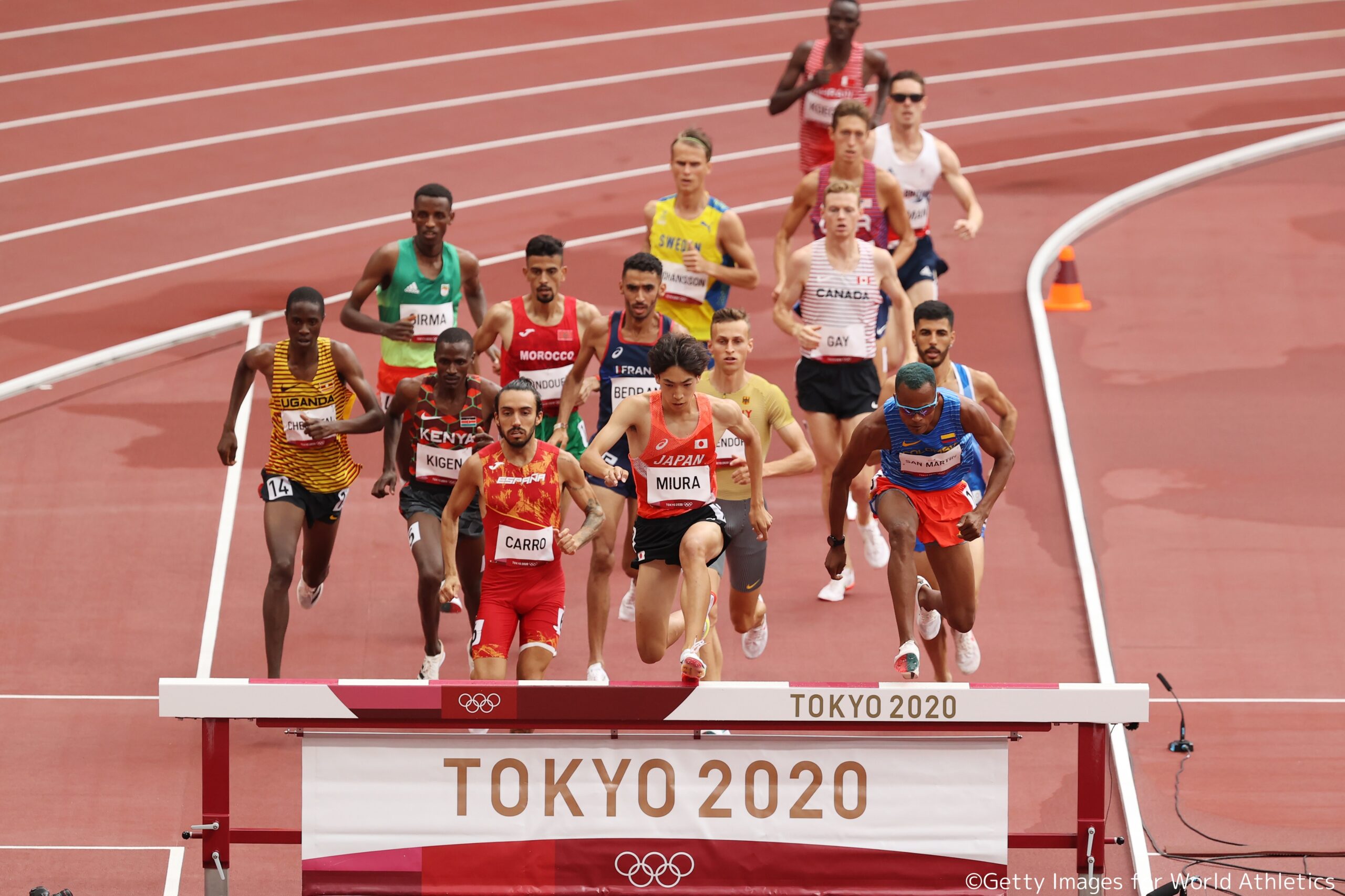
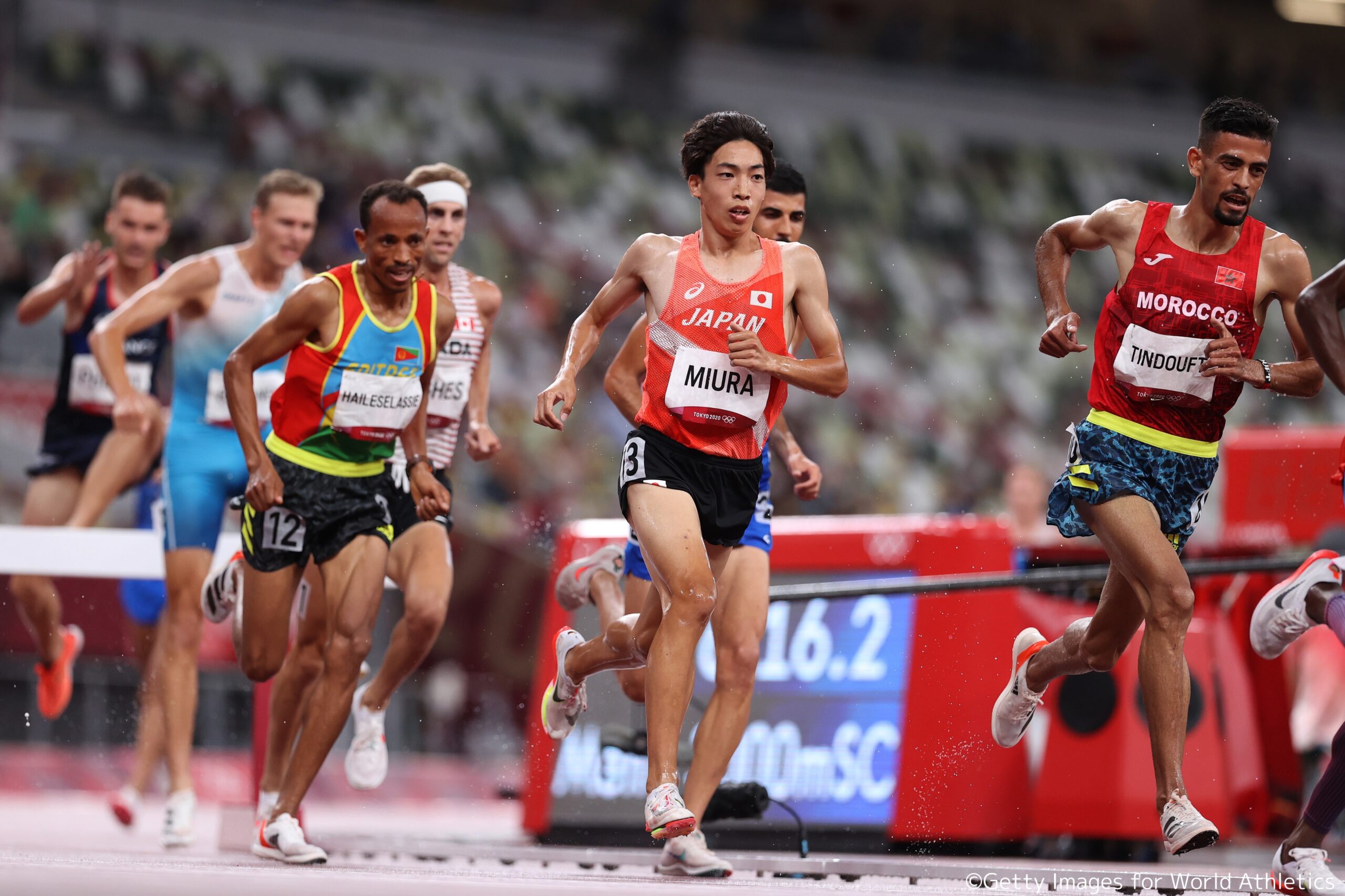
Hosting the Event in Home Country was a Chance of a Lifetime.
“I Want to Make the Most of the Opportunity”
–This year the Paris 2024 Olympic Games will be held in Paris, and next year the World Championships will be held in Tokyo. Do you have any kind of roadmap for the future that you think about?
I would like to aim for medals at the Paris 2024 Olympic Games and World Athletics Championships Tokyo 25, and I would like to focus on the results. Then there are the postponements due to the Corona disaster, and these days there are world-class competitions every year. Once the World Athletics Championships Tokyo 25is over, there will be a bit of a gap, so I would like to take another look at myself. I will be in the stage of adjusting my policies to improve my competitiveness in other events and my approach to make the 3000m steeplechase stronger. I believe that this is the time to reach a point where I can grow further.
–What kind of stage will the World Athletics Championships Tokyo 25be for you?
After the Tokyo 2020 Olympics, there will be another world championship held in my country, so I think it is a chance of a lifetime. This is also a chance of fate, so I would like to make the most of it.
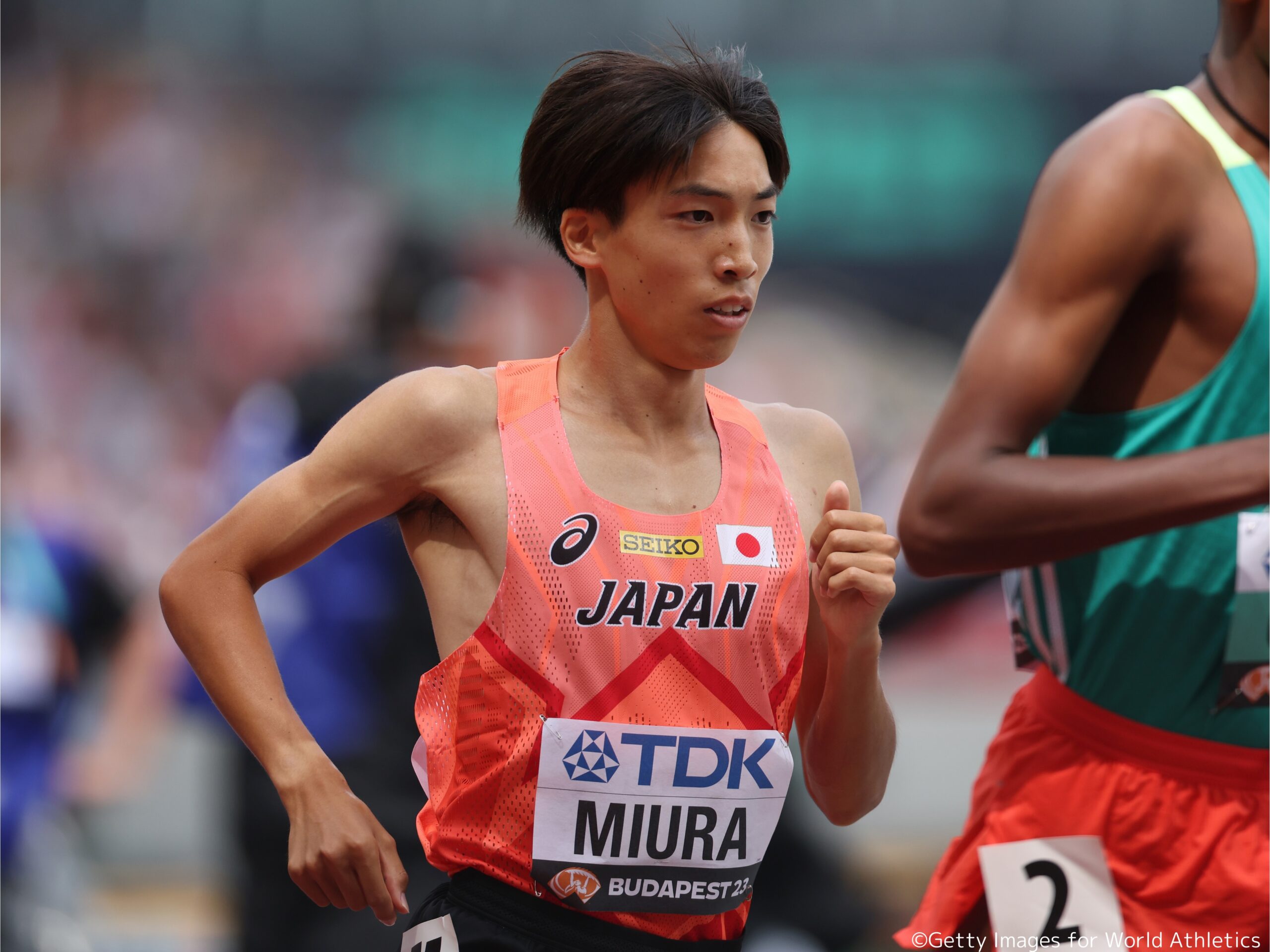
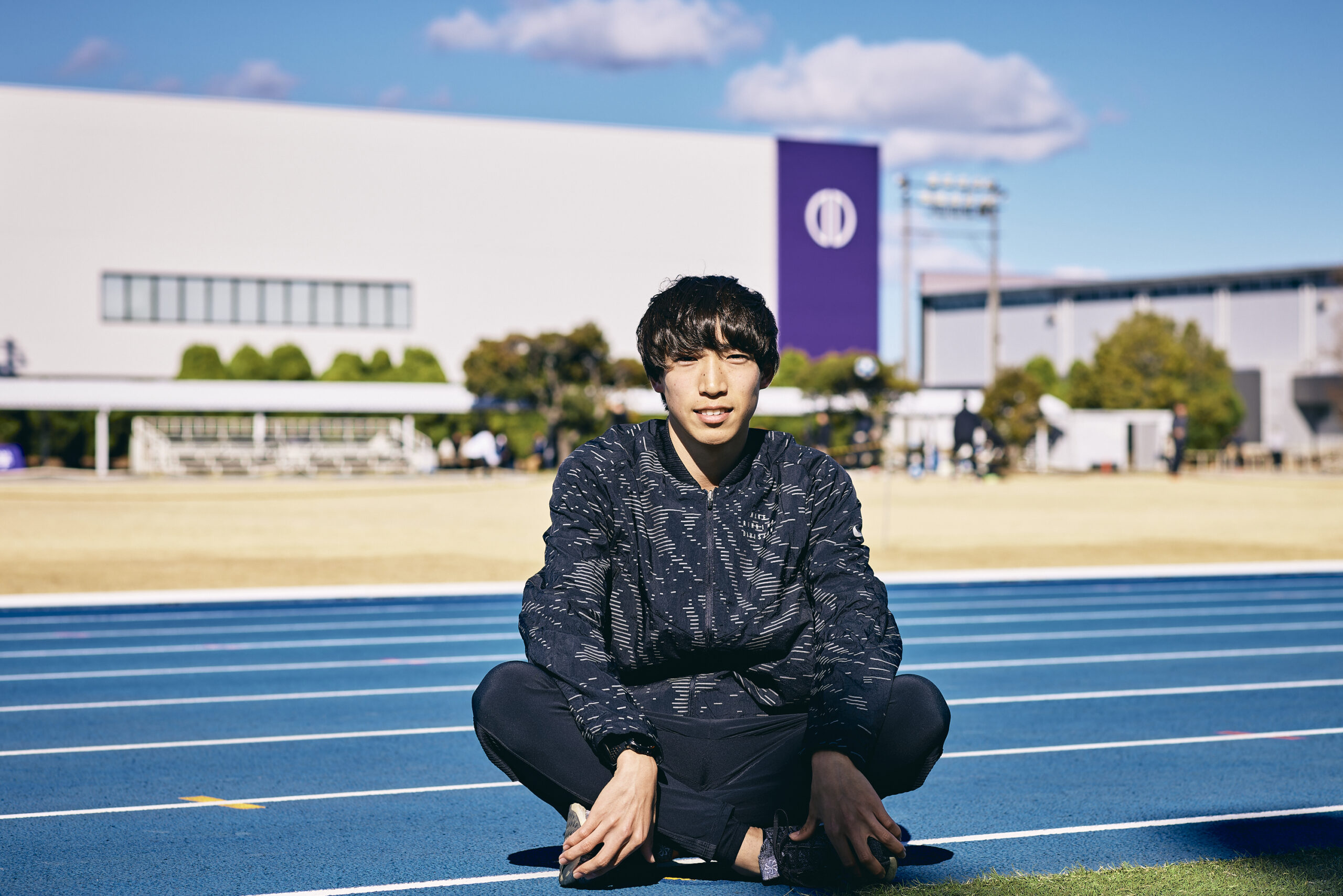
–What do you feel is the significance of holding the World Championships in Tokyo?
I think the fact that it is held in my hometown gives me the greatest advantage in terms of my condition and performance leading up to the event. Compared to overseas athletes, I feel more at ease going into the event.
–What are you looking forward to or expecting from the World Athletics Championships Tokyo 25?
It is for me to produce results. Even if my friends come to watch me, it is meaningless if I am not satisfied with my performance. I want to give a convincing performance.
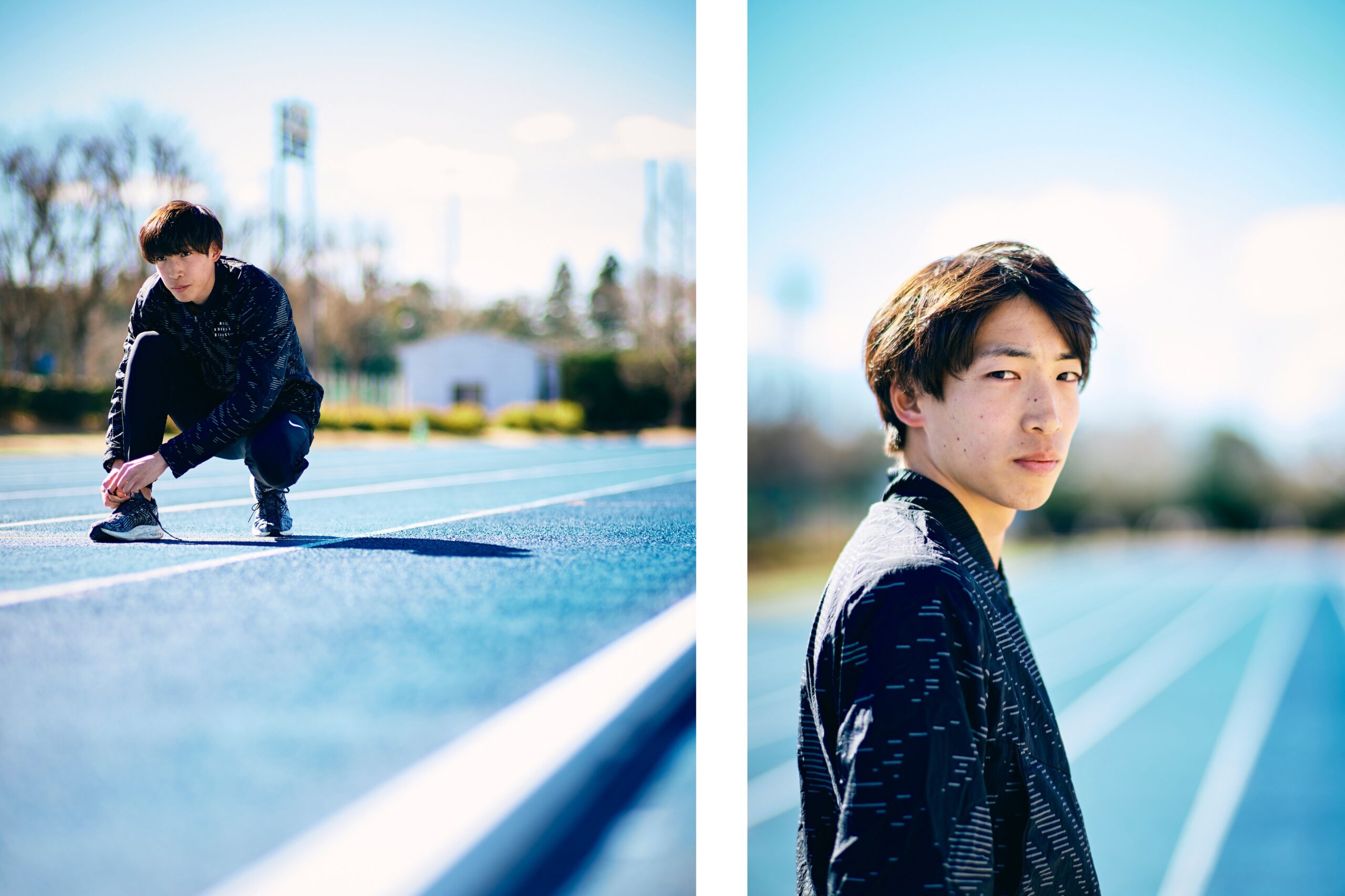
I like Places with Rich Nature Where I Can Spend Time
–Please tell us about your personal side. How do you often spend your holidays?
When I have a long break from the university, I often go out with friends. However, during the season, I don’t have much time off in Japan, so when I do get it occasionally, it is indoor.
–What kind of places do you go with your friends?
We go shopping at a shopping mall. I am from Hamada City in Shimane Prefecture, which is honestly in the countryside (laughs). That’s why I like places with rich nature where I can spend time relaxing and taking it easy. I don’t do anything too active, just breathe in the fresh air.
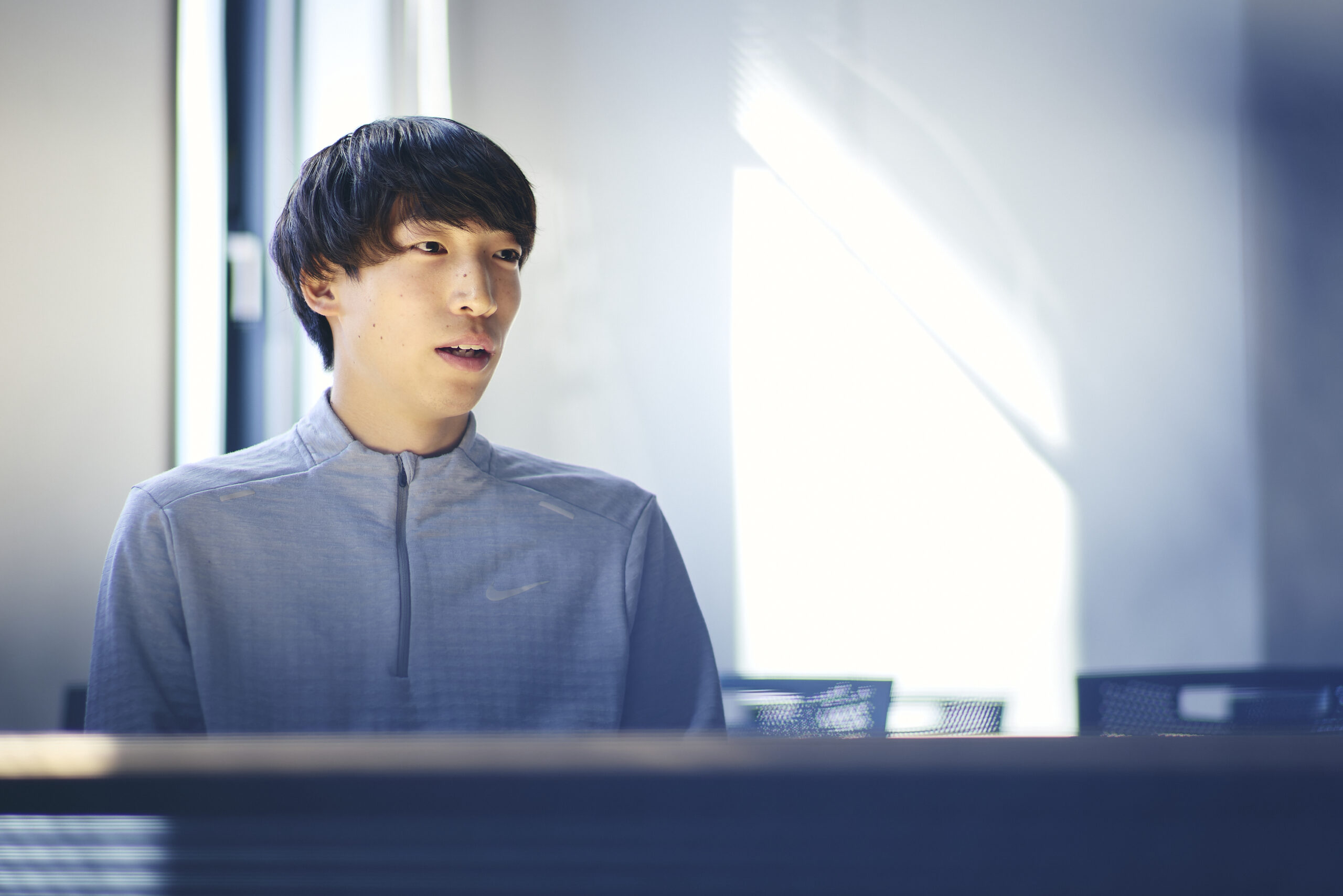
–What do you recommend about Shimane?
Hamada has a very beautiful ocean and delicious food. Since nothing disturbs you, I recommend it to those who want to spend time alone and cherish their own time.
–What kind of games do you play in Hamada?
That’s exactly what we did, even tag and hide-and-seek were played in nature, so it was on a large scale. There were also many rivers and mountains, so we would go for walks and camp.
The Most Nerve-Wracking Thing I’ve Ever done was “Educational Training”
–What are you into these days?
I got my driver’s license, so I drive. Recently, I rented a car and went to Enoshima with a friend. My friend was from Kanagawa, so he showed me around Enoshima. We also did some eating and walking together.
–Are you not very good with large groups of people?
I’m limited to two or three people (laughs).
–Do you play music in your car?
I do from time to time. Recently, I played songs that were popular when I was in junior high school and talked about episodes from that time, saying “I miss them.” AAA, GReeeeN, and FUNKY MONKEY BΛBY’S were played in the school building and at the sports festival in junior high school, so I listened to them while driving around.
–Some athletes listen to music to relax before a race. Are you the type of person who gets nervous?
I don’t get nervous very often. On the contrary, I listen to music or watch motivational movies when I have a hard time getting into the right frame of mind and want to increase my nervousness.
–What is the most nerve-wracking thing you have ever done?
I guess it would be the teaching practice. Last February, I went to my alma mater, Rakunan High School, to teach health and physical education. It lasted three to four weeks, but at the end there was a research class, in which I was evaluated by other teachers, and it was very difficult to plan for that.
–It is hard work to teach a large number of students when even two or three are the limit (laughs).
Well, it was quite hard work (laughs). Speaking in front of others was nothing, but controlling the students, deciding what the research class would be, and preparing and presenting the presentation by myself was nerve-wracking.
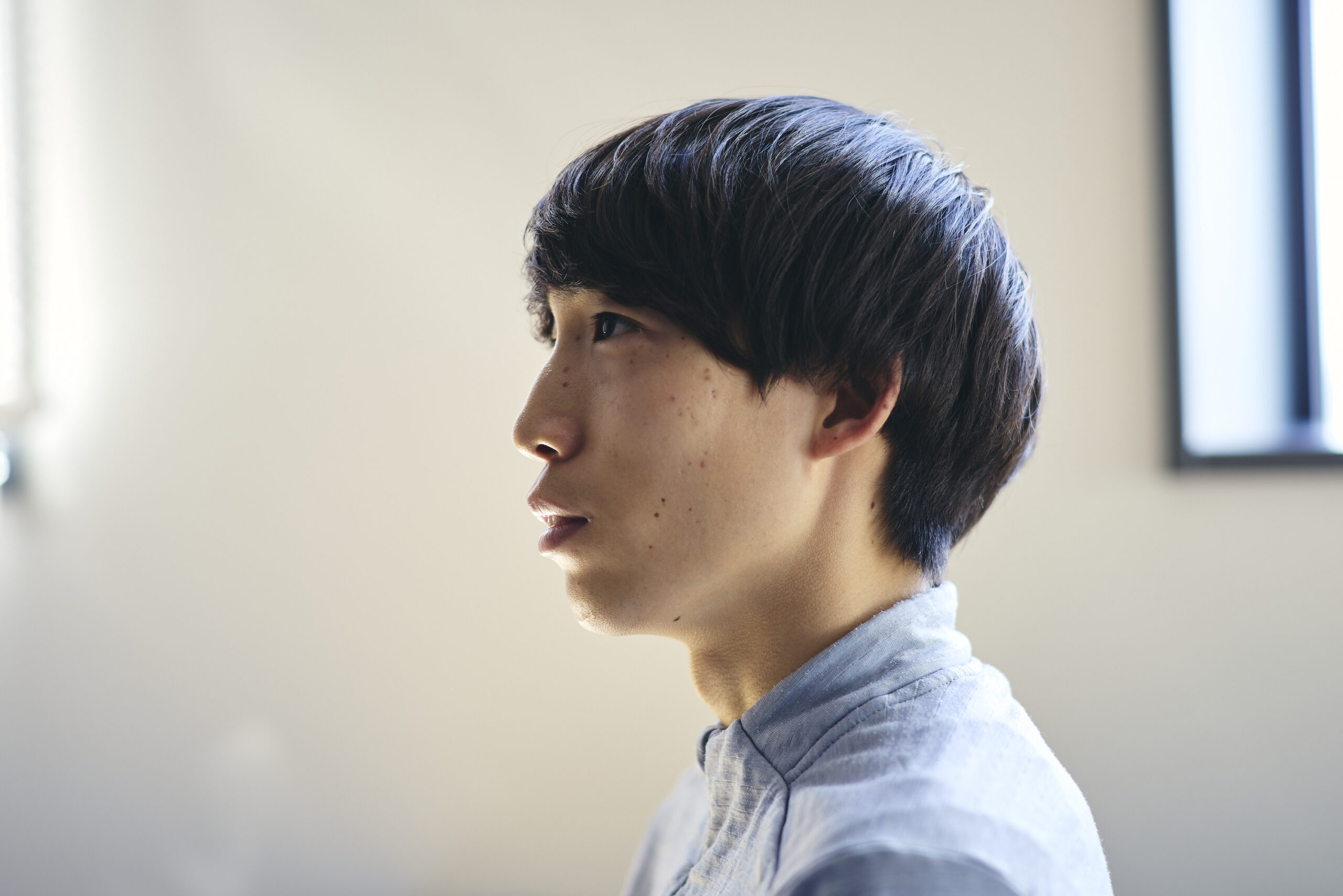
I’m limited to being with two or three…
It’s a Wonder I’ve been able to Make Relationships Work (laughs).
–How do you analyze your own personality?
I am often careless and I go at my own pace. I flow with the flow, but I am not interested in what is popular with the majority of people.
–You are an only child, so how did you adopt the culture of the world?
I really didn’t have that kind of culture. I mean, video game consoles and card games are all the rage, but I never played any of those. But I never played any of those things. It is a wonder that I have been able to have good relationships with people in such a situation (laughs). (Laughs.) But because we were in the countryside, there were many children who played outside. It was good that there was a place for everyone to play, and not just games.
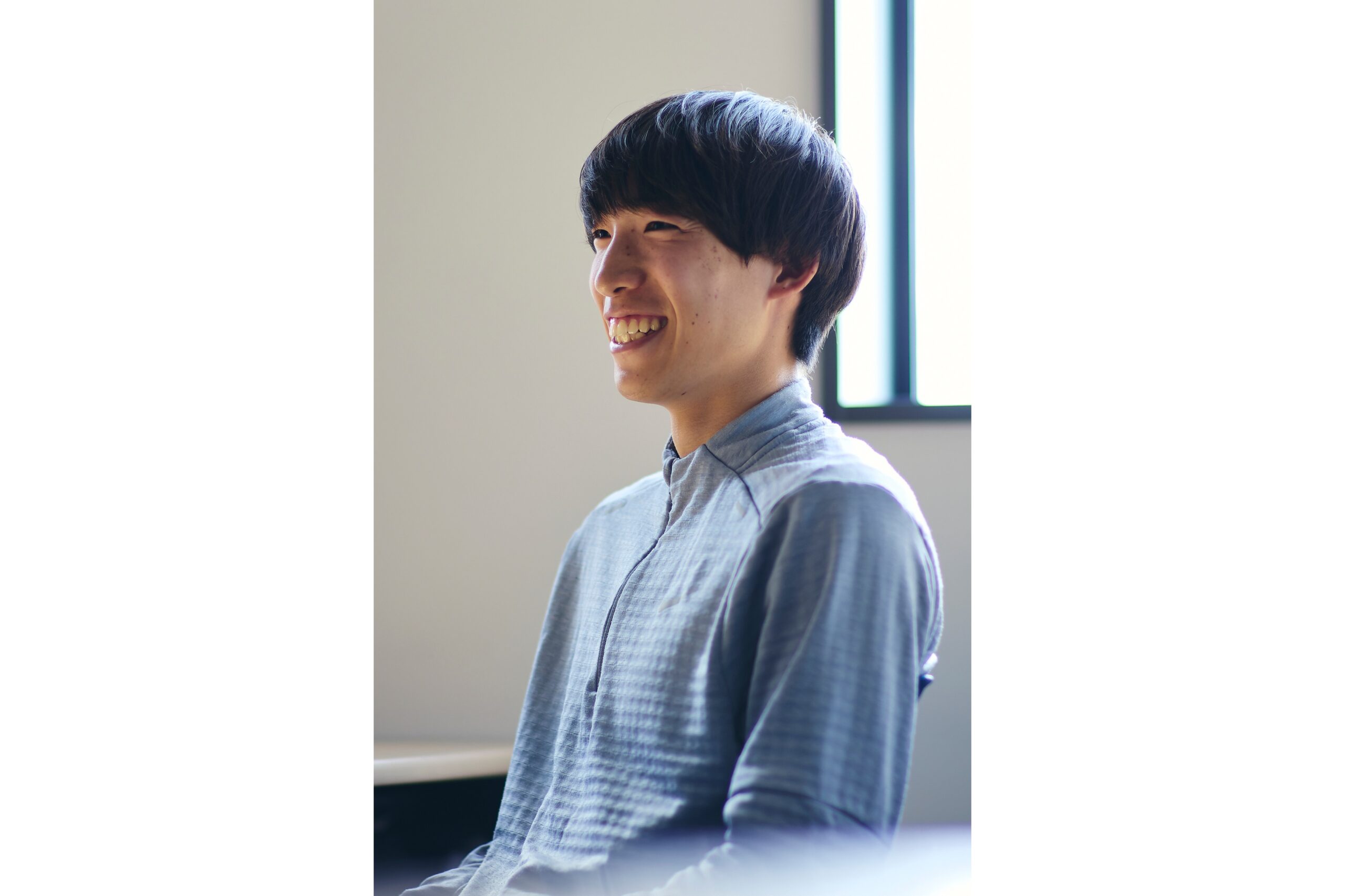
He laughs, “It’s a wonder I’ve been able to get along in my relationships.”
–Have you always watched sports on TV?
Yes, I did. Sports, but I also like movies, so I used to watch them a lot.
–What is your favorite movie?
I watch a lot of movies regardless of genre, so it is difficult to choose one. Recently, I have seen “The Devil Wears Prada,” “About Time,” “My Intern,” and the Korean movie “Eraser in My Head,” to name a few. The movies I have watched over and over again are “What’s Your Name” and “The Shape of Voices”.
–Are there any players you would recommend or admire?
I think any athlete who works hard and puts in the work is cool. When I was a little kid, I thought that Ryuji Kashiwabara-san of Toyo University, who ran the Hakone Ekiden, was a great athlete.
–Finally, please give a message to our readers who are looking forward to theWorld Athletics Championships Tokyo 25!
For the Tokyo 2020 Olympics, it was difficult to come to the stadium itself due to Corona. However, recently there are more and more opportunities to watch the games as in the past. I think the World Athletics Championships Tokyo 25 will also be very exciting because it will bring together the athletes, those who support them, and those who watch them. The athletes will be cheered up and motivated by the large number of people gathered. I myself will of course give my best performance, but I will also compete in a way that everyone can enjoy!
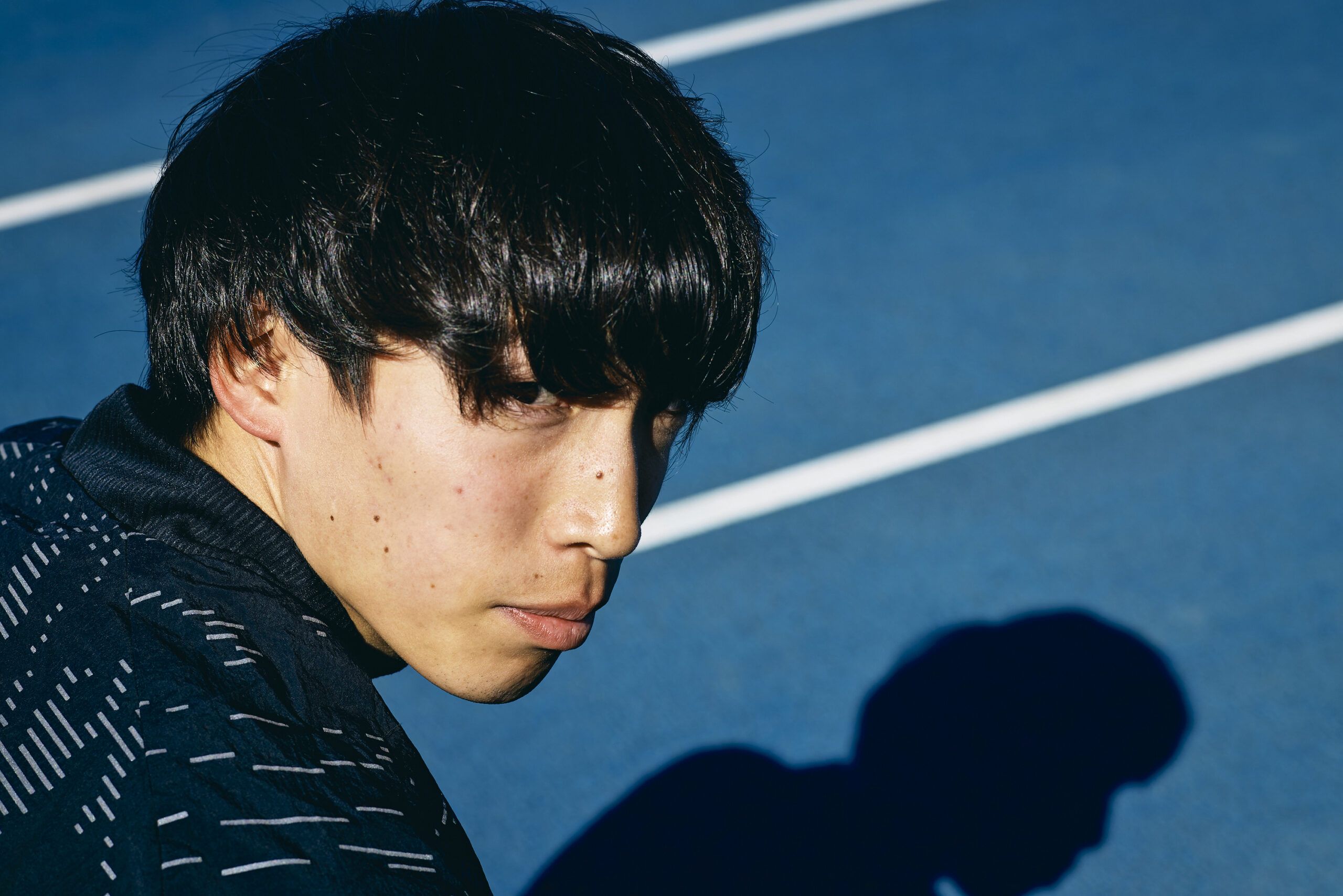
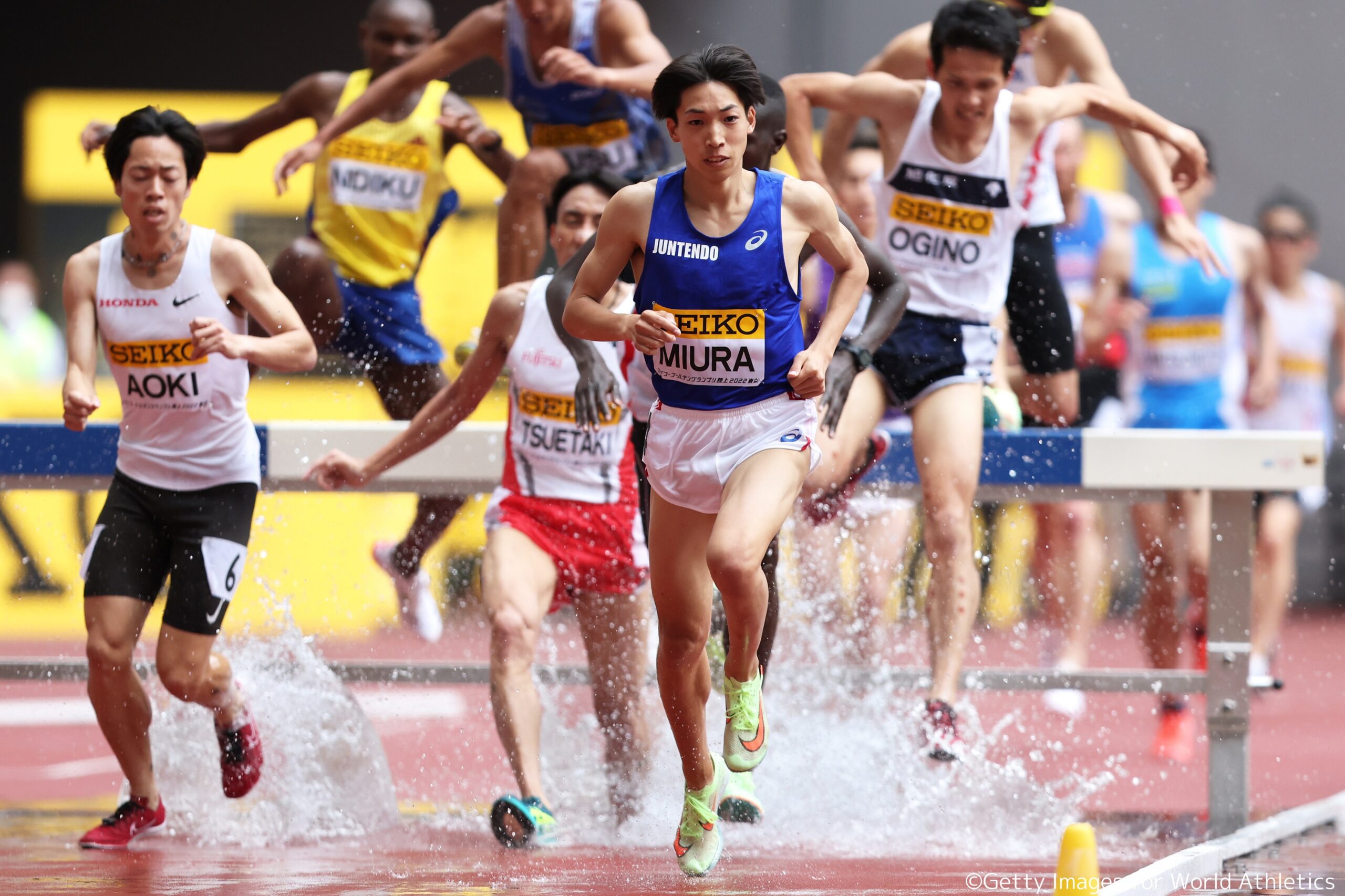
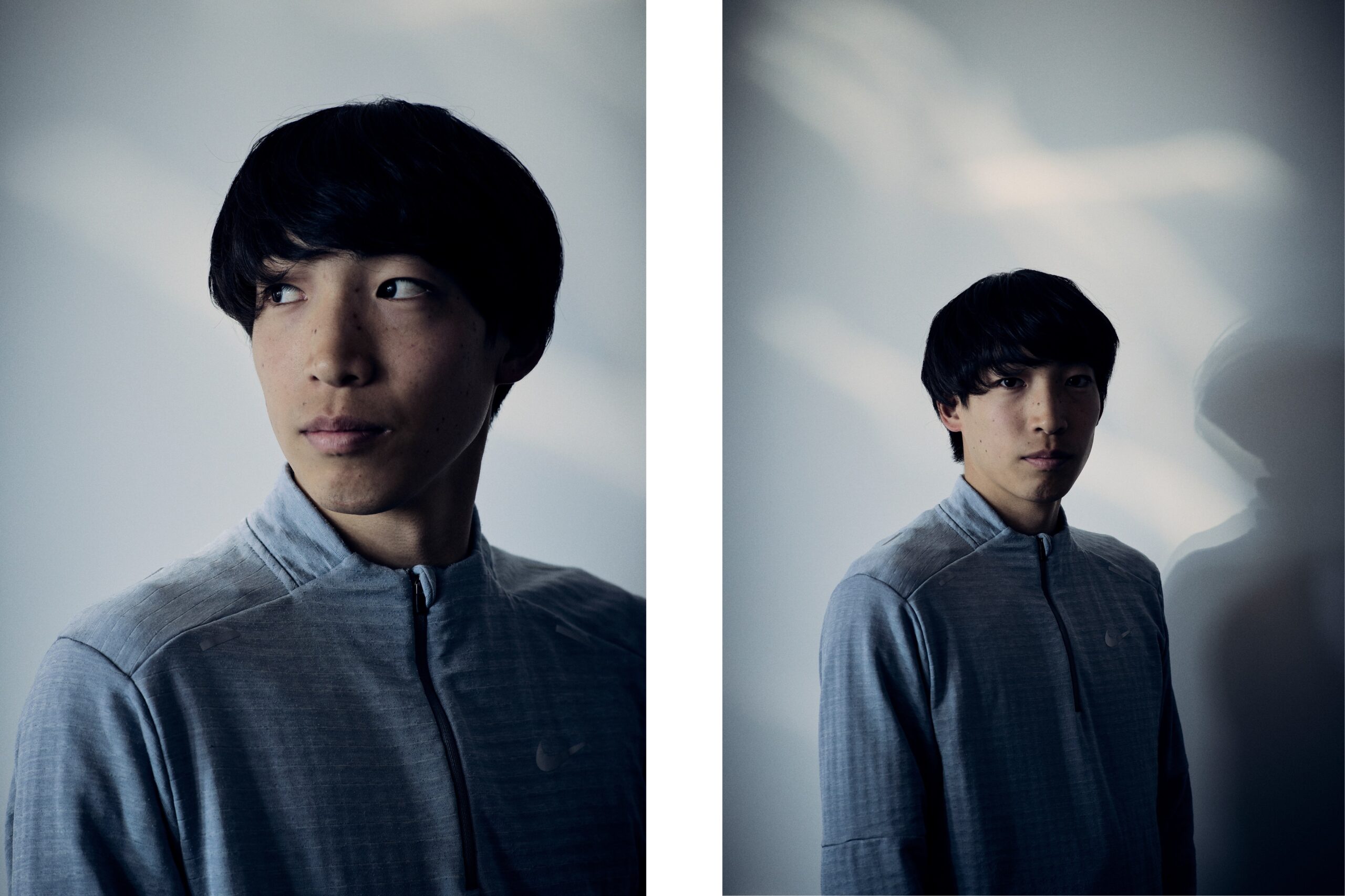
text by Moritaka Ohashi
photographs by Uta Mukuo
Co-produced with the Local Organising Committee of World Athletics Championships Tokyo 25.


